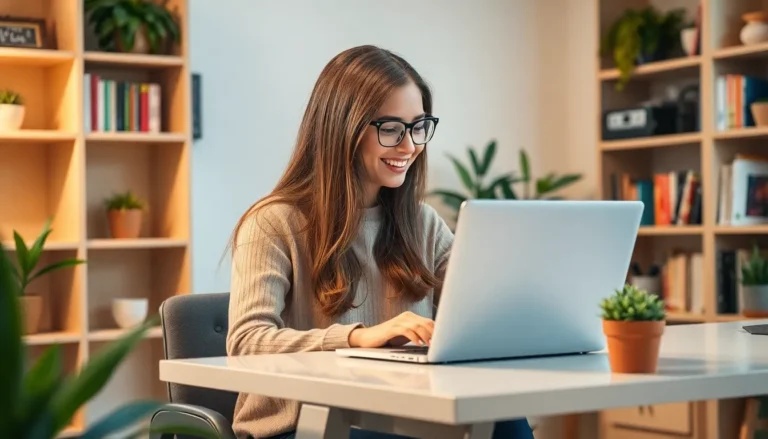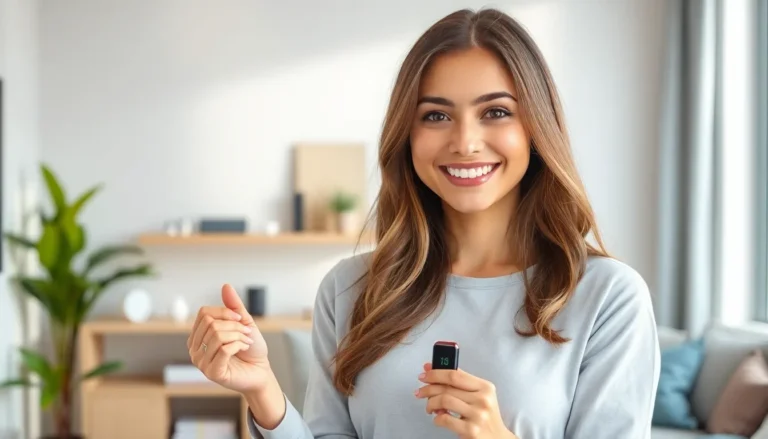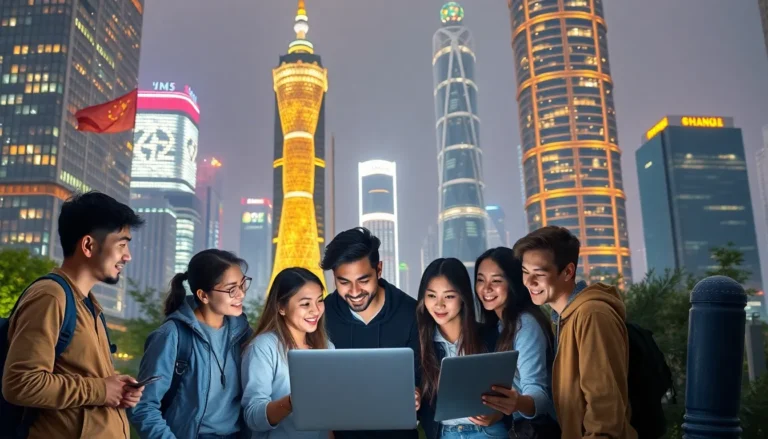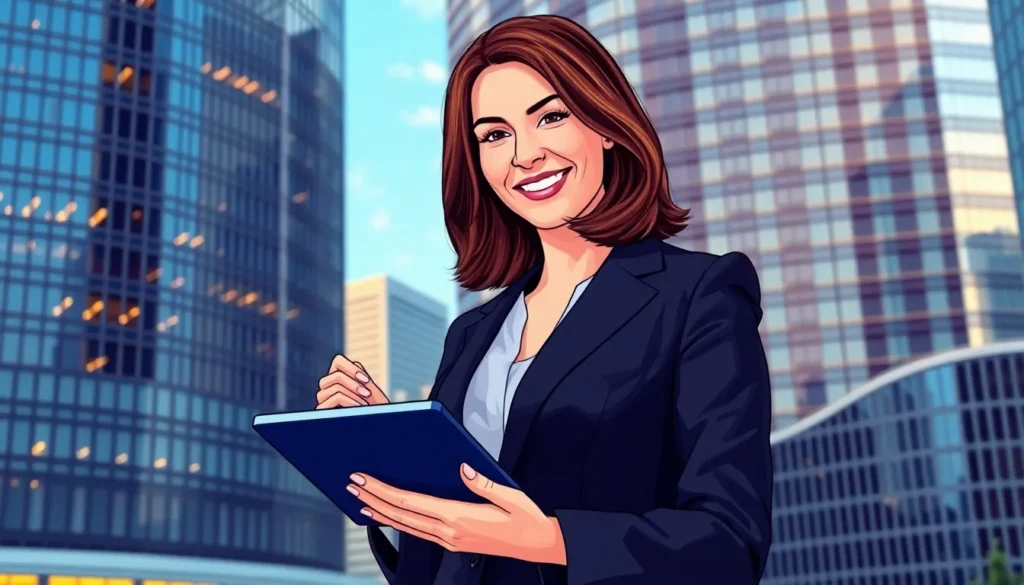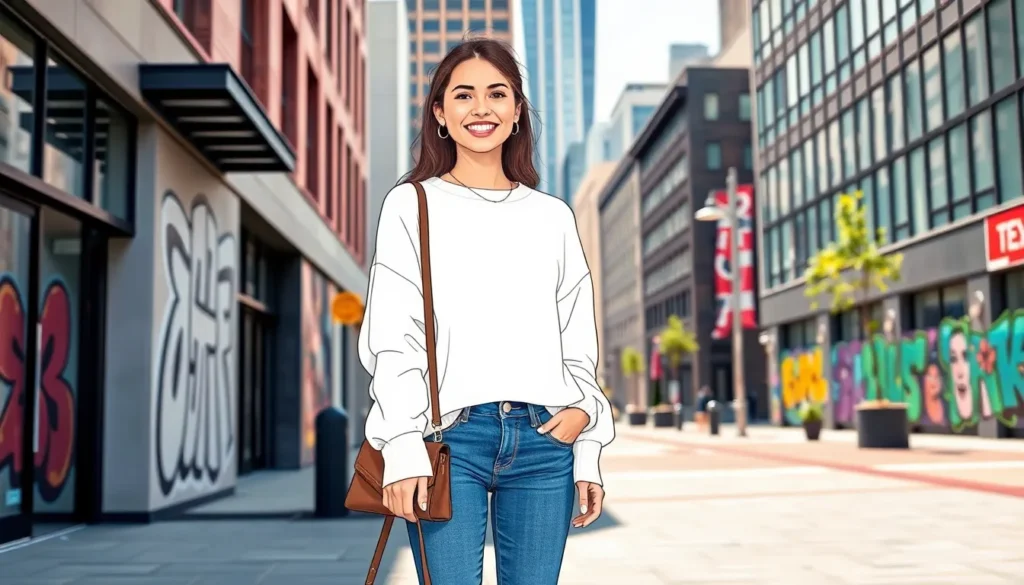In today’s work environment, the line between casual and professional has blurred faster than a coffee spill on a white shirt. Casual office style isn’t just about swapping out suits for sneakers; it’s a savvy way to express individuality while still looking sharp. After all, who says you can’t conquer the boardroom in your favorite pair of jeans?
Table of Contents
ToggleThe Evolution Of Casual Office Style
Casual office style has transformed significantly over the years, reflecting broader cultural shifts and changing workplace norms. As employees seek comfort in their attire, the line between formal and casual continues to blur.
Historical Context
Business attire traditionally centered on formal suits, dress shirts, and ties as essential elements for professionalism. In the mid-20th century, movements for equality and self-expression began, challenging these rigid norms. By the 1980s, some industries, particularly tech and creative fields, started adopting more relaxed dress codes. This early acceptance of dress-down days allowed employees to wear casual items like khakis and polo shirts. Over time, corporate America recognized that comfort could coexist with professionalism, leading to a significant cultural shift in how office attire was perceived.
Modern Interpretations
Today, casual office style encompasses a wide range of clothing options, from tailored trousers to stylish sneakers. Many workplaces embrace “smart casual,” combining comfort with polish. Employees often mix business casual elements with personal flair, utilizing accessories to elevate their outfits. Graphic tees paired with blazers or smart denim with button-ups offer versatility while maintaining a professional appearance. Companies increasingly encourage creative expression through attire, fostering a more engaging and authentic work environment.
Key Elements Of Casual Office Style
Casual office style blends comfort with professionalism. The right clothing and footwear are crucial for achieving this balance.
Essential Clothing Items
Trousers in a relaxed fit, such as chinos or dress pants, enhance comfort while maintaining a polished look. Blouses or button-up shirts made from breathable fabrics add sophistication. A tailored blazer can elevate casual outfits, providing a smart touch. Layering with lightweight cardigans is practical for varying office temperatures. Skirts in knee-length or midi styles offer versatility, while sweaters can add warmth without sacrificing style. Incorporating well-fitting jeans can complement more formal items, striking a balance between casual and professional. These clothing items work together to create an ensemble that reflects personal style while adhering to workplace expectations.
Suitable Footwear Options
Loafers provide both comfort and class, making them ideal for daily office wear. Ankle boots can lend a modern flair, versatile for different outfits. Sneakers in clean designs can add a laid-back vibe without compromising professionalism. Flats offer ease and can be paired with various clothing options. Sandals with a polished design work well in warmer climates, providing breathability. Heeled loafers add elegance while remaining comfortable for prolonged wear. Each footwear choice contributes to creating an overall casual office style that promotes confidence and creativity.
Pros And Cons Of Casual Office Style
Casual office style presents both benefits and challenges for employees and employers. Understanding these aspects clarifies its impact on workplace dynamics.
Advantages For Employees
Casual office attire enhances comfort, allowing employees to perform tasks without restrictions. This flexibility often leads to increased productivity levels, as individuals focus more on their work than their clothing. Also, self-expression flourishes through personal style choices, fostering a more authentic workplace atmosphere. Employees feel more relaxed and engaged, which enhances collaboration and teamwork. Furthermore, the option to dress casually may reduce the stress associated with adhering to strict dress codes. With a focus on comfort and individuality, workplaces become more inviting and creative.
Potential Drawbacks For Employers
Employers may face challenges with casual office style, particularly regarding professionalism. Employees’ clothing choices sometimes blur the lines between appropriate and inappropriate attire, potentially affecting the company’s image. Additionally, casual dress can lead to inconsistency in appearance, making it difficult to maintain a cohesive team identity. Some employees may misinterpret the casual dress code, opting for excessively relaxed outfits unsuitable for meetings or client interactions. Monitoring these expectations becomes essential, as lax guidelines can lead to misunderstandings regarding professionalism and workplace standards.
How To Achieve The Perfect Casual Office Look
Creating the perfect casual office look involves blending comfort with professionalism. Consider incorporating a few key elements to enhance your style.
Tips For Men
Opt for tailored chinos or dark jeans that fit well. Pair these with breathable button-up shirts or smart polo shirts in neutral colors. Layer with a lightweight blazer to add structure and polish. Footwear plays a crucial role; choose loafers or clean sneakers that complement the outfit. Accessories should be minimal yet thoughtful, like a classic watch or simple belt. Maintaining a groomed appearance, including neat hairstyles and facial hair, completes the professional yet relaxed look.
Tips For Women
Select versatile clothing pieces like tailored trousers or knee-length skirts. Choose lightweight blouses in breathable fabrics for comfort throughout the day. Layering with a tailored blazer or cardigan adds sophistication. Footwear options include loafers, ankle boots, or flats that keep the comfort factor in mind. Jewelry should remain understated, such as stud earrings or a delicate necklace. Makeup should be natural, enhancing features without appearing overdone, balancing professional and casual elements effortlessly.
Casual office style represents a significant shift in workplace culture. It allows individuals to express their unique personalities while still adhering to professional standards. This balance of comfort and polish not only enhances productivity but also fosters a more engaging work environment.
As companies continue to embrace this evolution in dress codes, employees have the opportunity to redefine their personal style within professional settings. By carefully selecting versatile pieces and thoughtful accessories, they can create looks that resonate with both comfort and professionalism.
Ultimately, casual office attire is more than just clothing; it’s a reflection of changing norms that prioritize individuality and creativity in the workplace.



